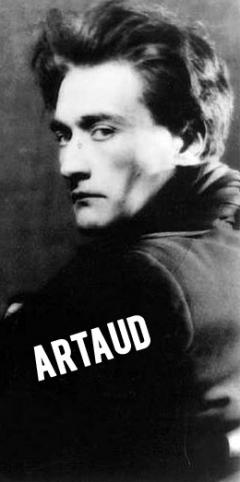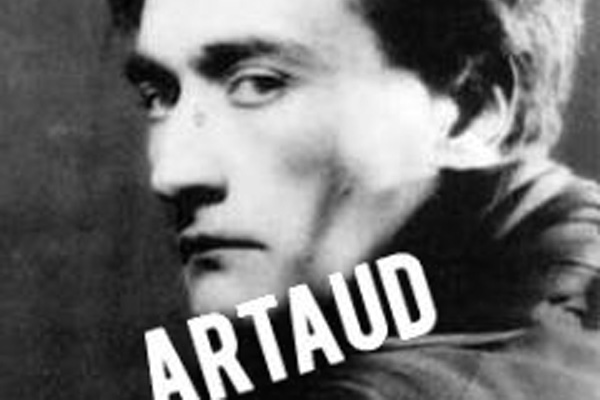I can’t deny that I am a huge fan of Antonin Artaud’s oeuvre, or that his conceptualization of the theater has formed a basis for my thesis on performativity in virtual worlds. Artaud did, after all, more or less coin virtual reality back in the 1930s in his essay The Alchemical Theater:
 “All true alchemists know that the alchemical symbol is a mirage as the theater is a mirage. And this perpetual allusion to the materials and the principle of the theater found in almost all alchemical books should be understood as the expression of an identity (of which alchemists are extremely aware) existing between the world in which the characters, objects, images, and in a general way all that constitutes the virtual reality of the theater develops, and the purely fictitious and illusory world in which the symbols of alchemy are evolved.”
“All true alchemists know that the alchemical symbol is a mirage as the theater is a mirage. And this perpetual allusion to the materials and the principle of the theater found in almost all alchemical books should be understood as the expression of an identity (of which alchemists are extremely aware) existing between the world in which the characters, objects, images, and in a general way all that constitutes the virtual reality of the theater develops, and the purely fictitious and illusory world in which the symbols of alchemy are evolved.”
The same definition of theater applies, in my opinion to present-day virtual worlds. While Artaud actually used the stage to re-create himself, the difference between “theater” and virtual worlds could be argued to lay in the spectator-participant relationship. Here’s what I argue in my dissertation:
“Unlike objects represented in film and photographic images and other asynchronous media, synchronous media allows for the image to look back and respond to the viewer (Cleland, 2008; Deleuze, 1983). Auratic presence as well as agency is reawakened by the interactive digital image through the reinstatement of the reversibility of the seer/seen relationship (Deleuze, 1983). The perceived object/place image becomes, as argued by Cleland (2008) and Illeris (2009), an intelligent and responsive interlocutor, transforming the viewer, the avatar, into a spectator-participant interacting directly with a responsive image. It is in such cases that presence can, as questioned by MacIntyre et al. (2004), enhance aura by (dis)-distancing place and viewer.
As further posited by Illeris (2006; 2009), this dialogue between viewer and place/object can allow for a second person perspective of the space, where the user not only simultaneously experiences an almost Lacanian gaze by switching from the first person perspective of their phenomenological body, what Ihde (2002) termed the “here-body” and the “there-body” of the avatar, but is also forced to confront the gaze of the observed place/object (Deleuze, 1983). This sliding, multidimensional experience from the “here-body” to the third-person avatar perspective can contextualize presence by strengthening the connection between the place/object and users’ personal experiences and knowledge (Doyle, 2009; Ihde, 2002; MacIntyre et al., 2004).”
“… the participatory nature of virtual worlds, as argued by Cleland (2008) allows the user to inhabit a character by controlling its speech and actions as opposed to merely identifying with a fictional character. Affective attachment to one’s avatar, facilitated by the designed ability to use the avatar not as a doll or puppet which would render the experience one of spectatorship, but rather as a spectator-participant agent existing and exercising its presence as the user’s in a world other than the actual world, can increase the transferability of these experiences by imbuing them with meaning as well as contextualizing them within a socio-cultural structure (Annetta et al., 2010; M. Bell & Consalvo, 2009). As argued by Poster (1990), technologies, extending to immersive virtual technologies, mediate our understanding of the world as well as our identities leading to a decentered sense of self where reality becomes non-linear and diffuse (Bukatman, 1993; Cleland, 2008).”
As a final note, I find it quite interesting, especially within the context of using virtual environment for informal education, that the Greek word theatron etymologically differs from the contemporary notion of the theater by extending the meaning of seeing to understanding. Any thoughts?
